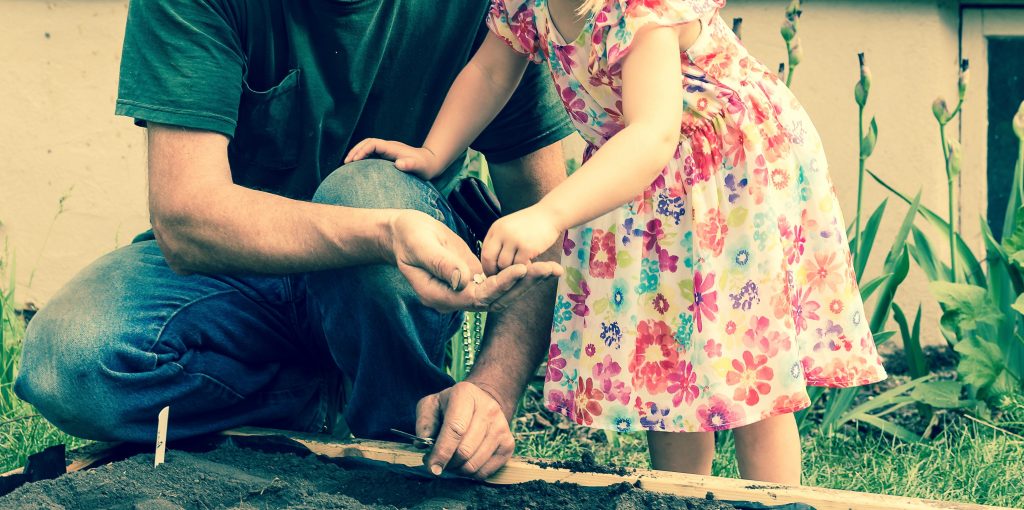
Our Foundation is a big proponent of using gardening/farming to teach Canadian kids about growing food while providing them with invaluable outdoor learning experiences. You can learn more about our initiatives here. However, today’s article intends to help with your particular goal in getting your children not only interested in growing food, but downright excited about the whole idea.
4 Ways to Get Your Children Excited About Sustainable Gardening/Farming and the Seed-to-Table Process
1. Start with Seed Preservation
Your kids are less likely to be engaged in a concept if they are brought in too far down the line. By introducing them to the genesis of the food growing process, you engage them early and provide them with a sense of ownership of the project. When it comes to growing food, providing an immersive and experiential environment that begins with seed preservation is the key.
Sure, they may seem more interested in getting their hands dirty in the garden right away, but there are ways to make the process of seed storage more fascinating. For one, they can start digging into the garden during the harvest to gather seeds from first-timer friendly plants such as tomatoes, beans, peppers, and peas. From there, teach them how to prepare seeds for storage and then come up with fun ways to store them, including decorating jars, containers and envelopes appropriate to respective species. Break out the crayons, scissors, stickers and glue and start a scrapbook to help catalogue the stored varieties, giving kids something to return to through the seasons to come. View more on how to make seed preservation more fun for kids.
2. Provide Supplementary Materials to Spark Interest
Introduce learning materials into the home that focus on the food growing process. We’re not talking about textbooks here – we don’t want the kids running to Netflix to escape. Instead, we’re referring to content that not only teaches, but entertains. These materials include (but are not exclusive to) popular children’s books on the seed-to-table process and smartphone/tablets apps that provide interactive online environments for growing food. And in the event that Netflix (and/or the BluRay player) is your kid’s favorite content consumption medium, there are movie suggestions that will foster their knowledge about sustainable gardening/farming too.
By integrating the above into their daily learning and playing regime, they will become more engrossed in the concept and ready to take the next step!
3. Volunteer at a Local Community Garden / Urban Farm
With the proverbial seed planted, now it is time to plant the literal one/s. All over Canada community gardens and urban farms are popping up near you. Keep up to date on many of them by following our Facebook page where we share exciting stories about initiatives around the country. There is no shortage in need for volunteers, so you and your child are sure to find a plot to call home in no time at all.
Not only can they help with garden/farm maintenance, they can make a real individual impact by introducing ideas and concepts that will improve the space. For instance, together with your child you can introduce fun concepts that may include a natural maze, garden fence painting, a free book exchange and creative ways to re-purpose old household items (toys, etc.) as planting beds. View more on concepts like these here.
You’ll not only find that getting kids involved in a community gardening project will have a very positive impact on their interest in growing food, the garden itself will be a brighter and happier place because of them.
4. Keep it Going (and Growing!) Indoors
This is Canada, and while there are cold weather crops that can thrive in the country’s varying climates, keeping your kids excited about growing food in cold or freezing temperatures can be a fruitless task. Fret not, because you can take their newfound love for sustainable food production indoors!
Remember the avocado seed in a jar trick from when you were little? Well you may not have realized it then, but you were learning about sustainable food production from an early age. Something as simple as that, complemented by the above concepts, will set your child light years ahead of where you were when you first learned about growing food. Other easy-to-grow-indoors nutritious foods include tomatoes, carrots, peppers and radishes. Follow these tips to growing each and your kids will be ripe and ready to start growing their own food.
Do you have any other ideas that you would like to share? We’d love to hear about them! Follow our Foundation on Facebook, Twitter, and/or Google+, find this article on our recently published posts and leave a comment.
Help us celebrate our passions! Our programs create moments of inspiration that can last a lifetime—in classrooms, in school gardens, by farm visits, and other outdoor educational activities. Please visit this link to learn more about our work in Canada. Please sign-up to be a Friend of the Foundation.








